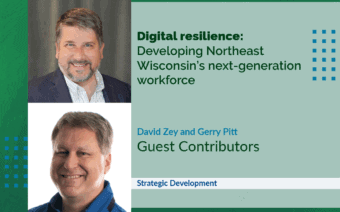
May 19, 2023
Billions of active users log onto their favorite social media platforms each day – some multiple times.
Despite their accessibility to the platform itself, the specific content they come across might not always be inclusive to their demographic, abilities, barriers or needs.
As content gets quickly pushed out, it tends to fit into a one-size-fits-all approach that focuses on how “average users” will interact rather than considering how unique individuals participate on the platform.
When producing social media content for your brand or business, it’s important to recognize the diversity among your audience and have the ability to tailor your message in ways that allow for a variety of people to engage.
As a business owner, if you can produce content that is inclusive to the needs of users, you can unlock an opportunity to build a loyal audience who genuinely enjoys engaging with your content and messaging because you have given them an easier means to do so.
Here are a few ways you can develop content to accommodate and welcome your audience:
First
Make your text easy to read.
Avoid using technical terms unless they are appropriate.
It isn’t always necessary to be super complex when writing social media content.
Sometimes it is important to remember less is more.
When using hashtags, capitalize the first letter of each word to make it more legible.
Because hashtags do not use spaces, doing so can be another way for your users to determine the start and end of a word – making for a more fluid process of reading.
Also, limit the number of special characters to avoid misinterpretation – especially with assistive technology that is used for individuals who cannot read the words on the screen.
If there are characters in your text that do not translate to a specific word, these types of platforms may have a difficult time reading it out loud, making the translation more confusing for the listener.
Second
Provide descriptive alternative text, or alt text – which is a descriptive caption of images that allows people to visualize the graphics when they can’t see them.
Visuals can be crucial to the meaning of your content, so if a user is unable to view these images for a specific reason, make sure to convey the context within the image when describing it.
You can mention color, location, objects and perspective within the image.
Also, your alt text doesn’t have to be complicated – make it short and to the point.
Another key tip to consider is including closed captioning.
Video captions are crucial for viewers with hearing impairments or those watching in their non-native language.
If your video falls onto the feed of someone with one of these circumstances, and you do not have a way for them to understand your message, you could lose their attention quite quickly.
In addition, because video content is skyrocketing across all social media platforms, it may fall into the hands of someone who is in a sound-off environment.
They may be interested in watching your video, but without the proper tools, they may keep scrolling.
The great thing about closed captions is many platforms will automatically generate them for you.
Although this is a huge time saver, be sure to proof your closed captions and make edits when necessary.
Finally
Finally, promote diverse representation.
Be sure your brand content is as diverse as the audience you are trying to reach.
Consumers love to feel like they are seeing people just like them.
If they cannot relate to your brand, they are more likely to walk away and not pursue a relationship with your business.
But, if your social media presence embodies your consumers’ demographics, you will be more likely to connect on a personal level.
Using these four tactics, you can begin to tailor your feed to your specific audience, considering the diverse range of needs, limitations and abilities.
Your business’s social media presence can help to break out of the one-size-fits-all approach we see today.
In turn, you can nourish quality relationships with your customers and stronger loyalty to your brand.
Sydney Zima is an account assistant with Leonard & Finco Public Relations. In her role, Zima develops and implements tactics to achieve the strategic communication goals of my clients.
 Bringing the convenience of the city to the middle of nowhere
Bringing the convenience of the city to the middle of nowhere Fifth Ward Brewing Co. raises a glass to growing business
Fifth Ward Brewing Co. raises a glass to growing business








